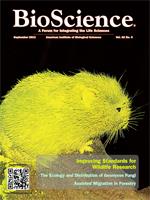Assisted migration (AM) id often presented as a strategy to save species that are imminently threatened by rapid climate change. This conception of AM, which has generated considerable controversy, typically proposes the movement of narrowly distributed, threatened species to suitable sites beyond their current range limits. However, existing North American forestry operations present an opportunity to practice AM on a larger scale, across millions of hectares, with a focus on moving populations of widely distributed, nonthreatened tree species within their current range limits. Despite these differences (and many others detailed herein), these two conceptions of AM have not been clearly distinguished in the literature, which has added confusion to recent dialogue and debate. Here, we aim to facilitate clearer communication on this topic by detailing this distinction and encouraging a more nuanced view of AM.
How to translate text using browser tools
1 September 2012
Placing Forestry in the Assisted Migration Debate
John H. Pedlar,
Daniel W. McKenney,
Isabelle Aubin,
Tannis Beardmore,
Jean Beaulieu,
Louis Iverson,
Gregory A. O'Neill,
Richard S. Winder,
Catherine Ste-Marie
ACCESS THE FULL ARTICLE
It is not available for individual sale.
This article is only available to subscribers.
It is not available for individual sale.
It is not available for individual sale.

BioScience
Vol. 62 • No. 9
September 2012
Vol. 62 • No. 9
September 2012
assisted migration
climate change
conservation
forestry
trees




